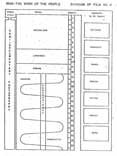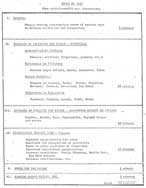
Work of the People film outline

Women of Iran film outline
"Iran is a unique example of rapid modern transfiguration which has not yet been documented for instructional use. This critical period in the history of Iran therefore goes unseen and unheard by the American public, and in particular, the American student...
"Michigan State University, in recognition of this need, supports the following proposal, and will provide the film makers and facilities to complete this project under NIRT financing...
"The purpose of this project is to capture on film the new Iran, the country as it is today, as well as its glorious civilization which has contribute so much to world advancement...
"Our reasoning is simple:
1. A survey shows an abysmal lack of current and objective instructional material on Iran either for instructional purposes or for general distribution.
2. Due to the current phenomenal socio-economy progress being made in Iran, we ding that the need for improved understanding between the people of the United States and Iran is more crucial than ever.
"The basic series will be aimed at high school through university level students...
"Film Number One on Iran will depict geography, the way of life, the socio-economic conditions, the political structures and realities, the youth and their future aims...
"Film Number Two will depict the past history of Iran. This will include the archaeological facts and artifacts, the tribes, and the contributions of ancient Persia to our modern society...
"MSU will have the exclusive right of distribution in the United States and NIRT will have the exclusive right of distribution in other parts of the world.
"...as NIRT may wish to develop different and additional materials within the framework of this agreement this plan of operation and this agreement have flexibility to provide such activities which may be undertaken with the mutual agreement of both parties."
 Work of the People film outline |
 Women of Iran film outline |